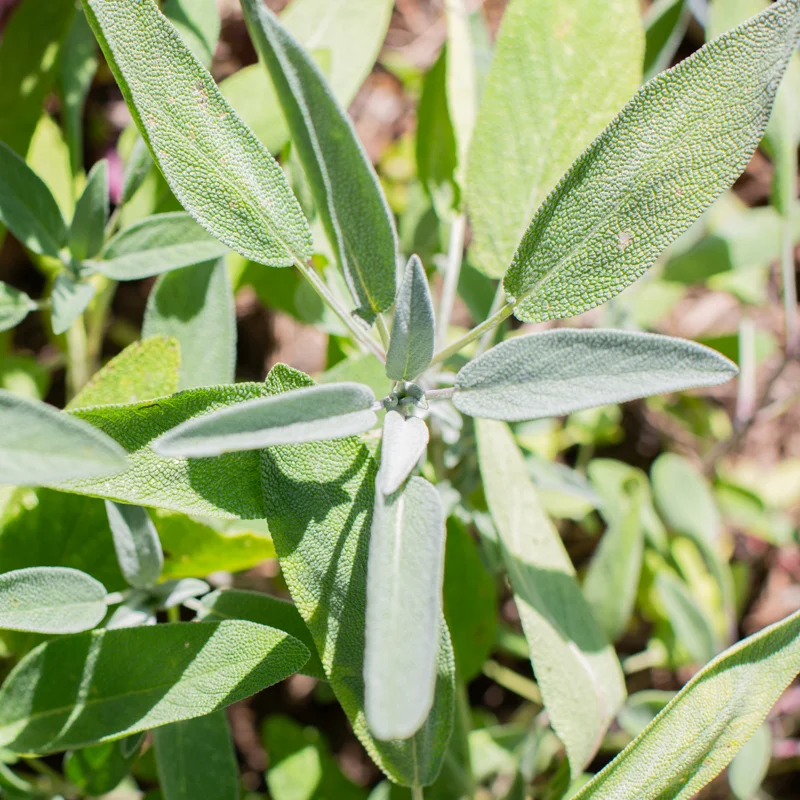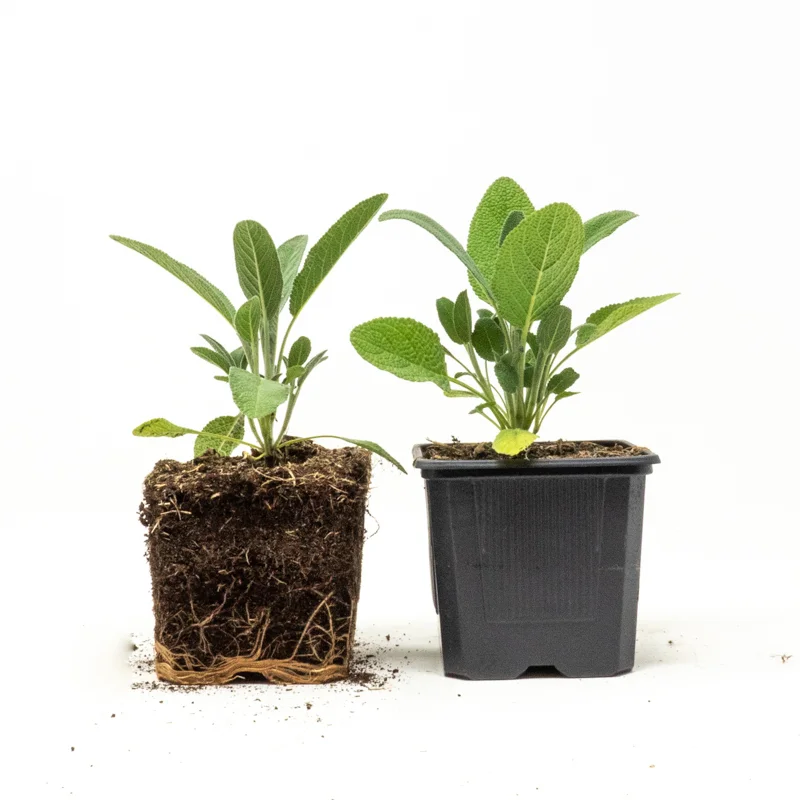Sage Officinale 2 organic plants
Immerse yourself in the fascinating world of sage with these sage plants. This aromatic and medicinal perennial forms a bushy, highly branched shrub with woody stems at the base, 30 to 80 cm high. Its oblong, grayish-green leaves are powerfully aromatic, and its long flower stalks are adorned with blue-purple flowers 2 to 3 cm long.
Grow it in the ground or in a pot, master its care and discover its many benefits. Welcome this "savior", a symbol of strength and health, and a must-have in family herbalism and cooking.
How to grow Sage?
Sage is planted in spring, from April to May, in the ground after the last frosts, or in pots.
Choose a sunny position and light, well-drained soil, even poor, stony soil. In heavy soils, add gravel or sand for good drainage. Transplant 50 cm apart in all directions and water abundantly after planting. This hardy plant requires little subsequent maintenance.
How and when to prune sage?
Prune at the end of the season, at least 15 cm from the base of the plant, to ensure good growth the following spring. Be careful not to cut too much into the wood, as this could irreversibly weaken the sage.
How to cut sage?
Take sage cuttings in summer, between June and August, to multiply your plants easily:
- fill a planter, pot or cups with a mixture of potting soil and sand;
- pick flowerless stems, 10 to 15 cm long, with no wood;
- remove the leaves from two-thirds of the lower part of each stem;
- cut off the tips of the terminal leaves with a chisel, to limit evaporation;
- plant the cuttings, up to the first leaves, in each pot or bucket;
- press the soil firmly around the cuttings;
- water;
- shelter the cuttings in a warm place;
- keep them moist until you take them again.
To facilitate root formation, soak the basal end of each cutting in a solution of natural cuttings hormone. This is easily prepared by cutting small sections of willow and leaving them to macerate overnight in a little water.
The benefits of sage
Rich in essential oils (thujone, camphor, eucalyptol), polyphenols, flavonoids and phenolic acid, sage has countless virtues, but is best known for its toning and stimulating, antiperspirant, antiseptic, digestive and antispasmodic properties.
Sage helps to relaunch, little by little, certain vital processes that will help you emerge from a period of fatigue or overwork, after a long illness or during nervous exhaustion. It is therefore indicated for physical and mental weakness. Its stimulating properties and warming benefits also make this plant highly effective when the digestive system seems to be running slowly or the metabolism is stagnating due to excess.
The best natural antiperspirant, sage is recommended for people who perspire too easily or have clammy hands and feet, as well as for feverish patients whose sleep is disturbed by night sweats.
Sage essential oil is neurotoxic and abortifacient due to the presence of thujone, and is not recommended for epileptics or pregnant women. Furthermore, as a precautionary measure, consumption of this plant for long periods or in excessive quantities is not recommended.
Shipping and delivery of Sage officinale plants
- Orders are dispatched Monday to Thursday.
- Shipment to mainland France only.
- Shipping cartons designed for optimum protection of plants.
- Free shipping does not apply to plants.










